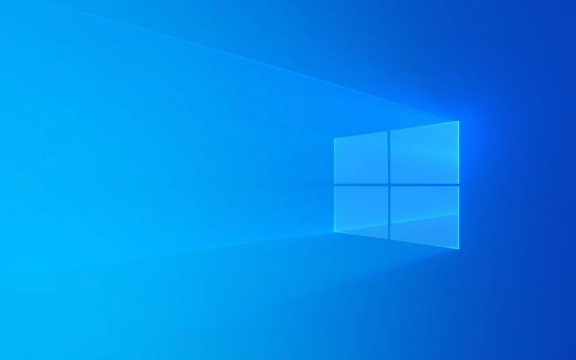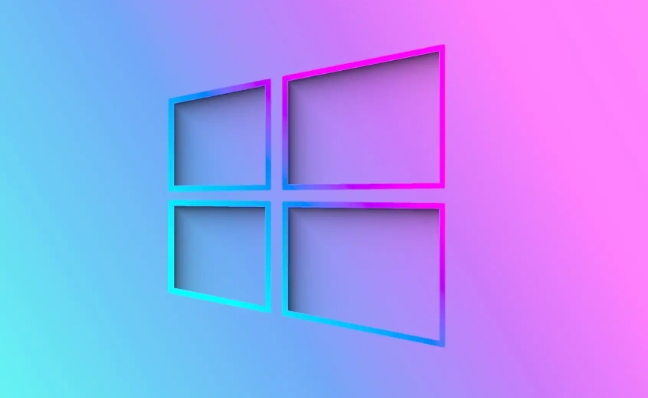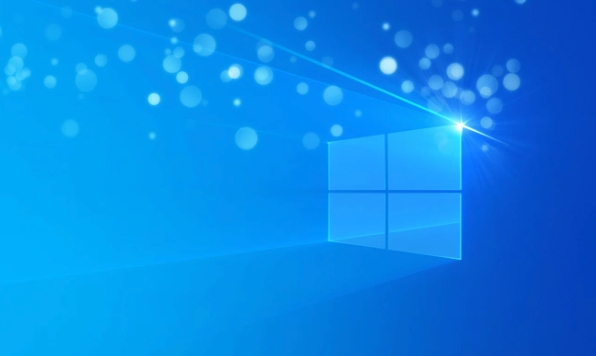The steps to reinstall the system and install Windows include: 1. Prepare a USB drive of at least 8GB, a computer with normal Internet access, Windows ISO image files, and understand the BIOS/UEFI startup method; 2. Use Rufus to create a bootable USB drive; 3. Enter the BIOS settings to set priority to boot from the USB drive and confirm the UEFI mode; 4. Start installing Windows, select the system version and partition correctly; 5. After the installation is completed, install key drivers such as motherboard and graphics card first, and then gradually install necessary software. The entire process needs to be paid attention to data backup and follow the steps to complete it smoothly.

Reinstalling the system and installing Windows are the choices for many users when they encounter computer lag, poisoning, or want to start over. In fact, this process is not complicated. Just prepare the tools and follow the steps to complete it.

Prepare the necessary tools
Before you start, make sure you have the following:

- A USB drive with a capacity of at least 8GB (it is recommended to use an empty USB drive, the data inside will be cleared)
- A computer that can access the Internet normally, used to download system images and create startup disks
- ISO image files for Windows systems (can be obtained from Microsoft's official website)
- Basic understanding of BIOS or UEFI startup methods (most of today's computers are in UEFI mode)
It is recommended to use free tools like Rufus to make bootable USB drives. It has a simple interface and fast speed. You will not make any mistakes when you choose the right parameters.
Set up the BIOS and boot from the USB drive
After plugging in the boot USB drive, restart the computer and enter the BIOS settings interface (usually press F2, Del, Esc or F12 when booting, please see the screen prompts for details).

Two things need to be done in BIOS:
- Set the startup sequence to priority booting from the USB flash drive
- If it is a newer computer, confirm whether UEFI mode is enabled (some old systems need to switch to Legacy BIOS mode)
After saving the settings, restarting, you will usually enter the Windows installation interface. If it doesn't work, you can try re-pluging and unplugging the USB drive or changing to a USB port.
Start installing Windows
After entering the installation interface, just keep the language and other options default, just click "Next" → "Install Now".
Next, you will ask to enter the product key. If you don’t have it or are not sure, you can choose “I don’t have a product key” and complete the installation first (reactivate it later).
Select the system version you want to install (such as Windows 10 Home Edition) and enter the disk partitioning section. Note here:
- If it is a brand new hard disk, you must first create a new partition and then format it
- If you already have a system, you can choose to overwrite the installation or delete the original partition
- If you don't know much about partitions, directly select "Customize: Install Windows only (Advanced)" and delete all partitions and re-partition them.
Then select the system installation location, click "Next" to start copying the file. This step will automatically restart several times. You don’t need to unplug the USB flash drive, just let it complete the process by itself.
Install drivers and basic software
After the system is installed, the first step is not to rush to install the software, but to install the driver first. If the key drivers such as motherboard, graphics card, and sound card are not installed, they may affect network, display or hardware performance.
Most of the current system installation disks come with common drivers, but sometimes they are not complete. You can use the driver management software provided by motherboard manufacturers to identify and install it in one click, such as Asus' AI Suite, MSI's MSI Center, etc.
Finally, start installing the software you need, such as browsers, office software, antivirus tools, etc. Don’t install a bunch of software as soon as you come up, as it can easily affect the system operation speed.
Basically that's it. Although the whole process seems a bit more steps, it is not difficult to do it step by step. Pay attention to backup data and be patient, you can usually do it.
The above is the detailed content of How to format a PC and install Windows. For more information, please follow other related articles on the PHP Chinese website!

Hot AI Tools

Undress AI Tool
Undress images for free

Undresser.AI Undress
AI-powered app for creating realistic nude photos

AI Clothes Remover
Online AI tool for removing clothes from photos.

Clothoff.io
AI clothes remover

Video Face Swap
Swap faces in any video effortlessly with our completely free AI face swap tool!

Hot Article

Hot Tools

Notepad++7.3.1
Easy-to-use and free code editor

SublimeText3 Chinese version
Chinese version, very easy to use

Zend Studio 13.0.1
Powerful PHP integrated development environment

Dreamweaver CS6
Visual web development tools

SublimeText3 Mac version
God-level code editing software (SublimeText3)

Hot Topics
 What is the difference between macOS Recovery and Internet Recovery?
Jul 02, 2025 am 12:24 AM
What is the difference between macOS Recovery and Internet Recovery?
Jul 02, 2025 am 12:24 AM
macOSRecoveryisabuilt-inrecoverysystemonahiddenpartitionofyourMac’sstartupdisk,providingtoolslikeDiskUtility,Terminal,andmacOSreinstallation.1.Itloadsquicklyfromlocalstorage.2.Requiresafunctioninginternaldrive.3.ToolsincludereinstallingmacOS,repairin
 How to dual boot Windows 11 and Ubuntu
Jul 01, 2025 am 12:08 AM
How to dual boot Windows 11 and Ubuntu
Jul 01, 2025 am 12:08 AM
When installing dual systems, you need to pay attention to partitioning, installation order and BIOS settings. 1. Partition preparation: Use disk management tools to compress at least 25GB (50GB or more) of unallocated space to Ubuntu without formatting; 2. Make a boot U disk: Use Rufus to write Ubuntu ISO to at least 8GB U disk; 3. BIOS settings: Restart and enter the BIOS (usually press F2, Del or Esc), turn off SecureBoot, and set the U disk as the first boot item; 4. Install Ubuntu: Select "Somethingelse" custom partition, create a new ext4 mount point/ and occupy the remaining space, and build a swap partition equal to the memory size, boot and add
 Minimum system requirements for Windows 11
Jul 03, 2025 am 12:48 AM
Minimum system requirements for Windows 11
Jul 03, 2025 am 12:48 AM
The minimum hardware requirements of Windows 11 mainly include five aspects: 1. The processor must be from the sixth-generation Intel or Ryzen starting point or above, supports 64-bit, dual-core and above, the main frequency is not less than 1GHz, and is on the Microsoft support list; 2. At least 4GB of memory, but 8GB or higher is recommended to ensure smooth use; 3. At least 64GB of storage space, the system itself occupies about 25~30GB, and it is recommended to use SSD; 4. The TPM2.0 security module must be supported and enabled, many motherboards did not meet this condition before 2016; 5. Some users try to bypass the restricted installation may cause driver or update problems, and ordinary users do not recommend this.
 Can I use my Windows 7 product key to activate a new Windows 10 installation
Jul 02, 2025 am 12:15 AM
Can I use my Windows 7 product key to activate a new Windows 10 installation
Jul 02, 2025 am 12:15 AM
No,youcannotdirectlyuseaWindows7productkeytoactivateWindows10.1.Windowsproductkeysareversion-specific,soaWindows7keyonlyworksforWindows7.2.IfyourPCwasupgradedfromWindows7toWindows10beforesupportended,itmayhaveadigitallicenselinkedtothehardware,allowi
 This copy of the Install macOS application is damaged
Jul 06, 2025 am 12:26 AM
This copy of the Install macOS application is damaged
Jul 06, 2025 am 12:26 AM
The "InstallmacOS is corrupted" prompt is usually caused by security mechanisms rather than file corruption. Common reasons include unofficial download sources, incomplete files, failure to verify signatures in the old system, or misjudgment of Gatekeeper; solutions include: 1. Forced opening of the installer through terminal commands and starting the USB flash drive; 2. Temporarily closing Gatekeeper verification; 3. Remount the installer and delete kernelcache file repair permissions; ways to avoid problems include prioritizing the use of official channels to download, verify the SHA256 value, selecting a trusted third-party site, and avoiding modification of the installation content.
 How to convert MBR to GPT for Windows 11 installation
Jul 05, 2025 am 12:39 AM
How to convert MBR to GPT for Windows 11 installation
Jul 05, 2025 am 12:39 AM
To convert the hard disk from MBR to GPT to install Windows 11, you must first back up the data and confirm that the motherboard supports UEFI; 1. Automatic conversion using Windows installation media: Insert the USB disk and boot from USB, press Shift F10 on the installation interface to open the command prompt, enter diskpart, listdisk, selectdiskX, clean, convertgpt commands to complete the conversion. This method will clear all contents of the disk; 2. Lossless conversion of non-system disks in existing Windows: Use AOMEIPartitionAssistantStandard and other tools to right-click to convert to GPT disk. It is still recommended to backup data before operation;
 Windows 10 installation stuck on logo
Jul 06, 2025 am 12:01 AM
Windows 10 installation stuck on logo
Jul 06, 2025 am 12:01 AM
When booting the computer and logging in the Windows 10Logo interface is usually not damaged by hardware, but rather an error in system file loading. 1. Wait for 15 to 30 minutes first to confirm whether it is "fake death". If there is no progress, force restart; 2. Force shut down three times to enter the recovery environment, try to start repair or enter safe mode to troubleshoot driver and software conflicts; 3. Check the hard disk bad channel, clean the memory gold fingers and replace the slot to test the hardware problems; 4. Finally, you can try to reset the computer or install the system in a brand new way to solve it, and give priority to using the official website pure ISO mirror.
 How to back up my Mac before a macOS update?
Jul 15, 2025 am 12:33 AM
How to back up my Mac before a macOS update?
Jul 15, 2025 am 12:33 AM
Before updating macOS, you should back up your Mac. 1. Use TimeMachine to make a complete backup, insert the external hard disk and enable automatic regular backup; 2. Manually back up important files to cloud storage or external devices, and give priority to backing up documents, photos, bookmarks and other key information; 3. Create a bootable macOS installation disk for system repair or reinstallation, prepare a 16GB USB disk and run terminal commands to create. Backup can effectively prevent update failure or data loss, and it is more secure to prepare in advance.






